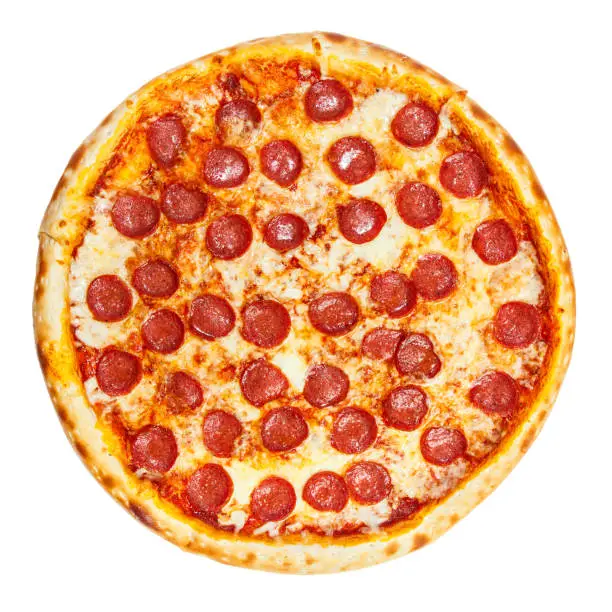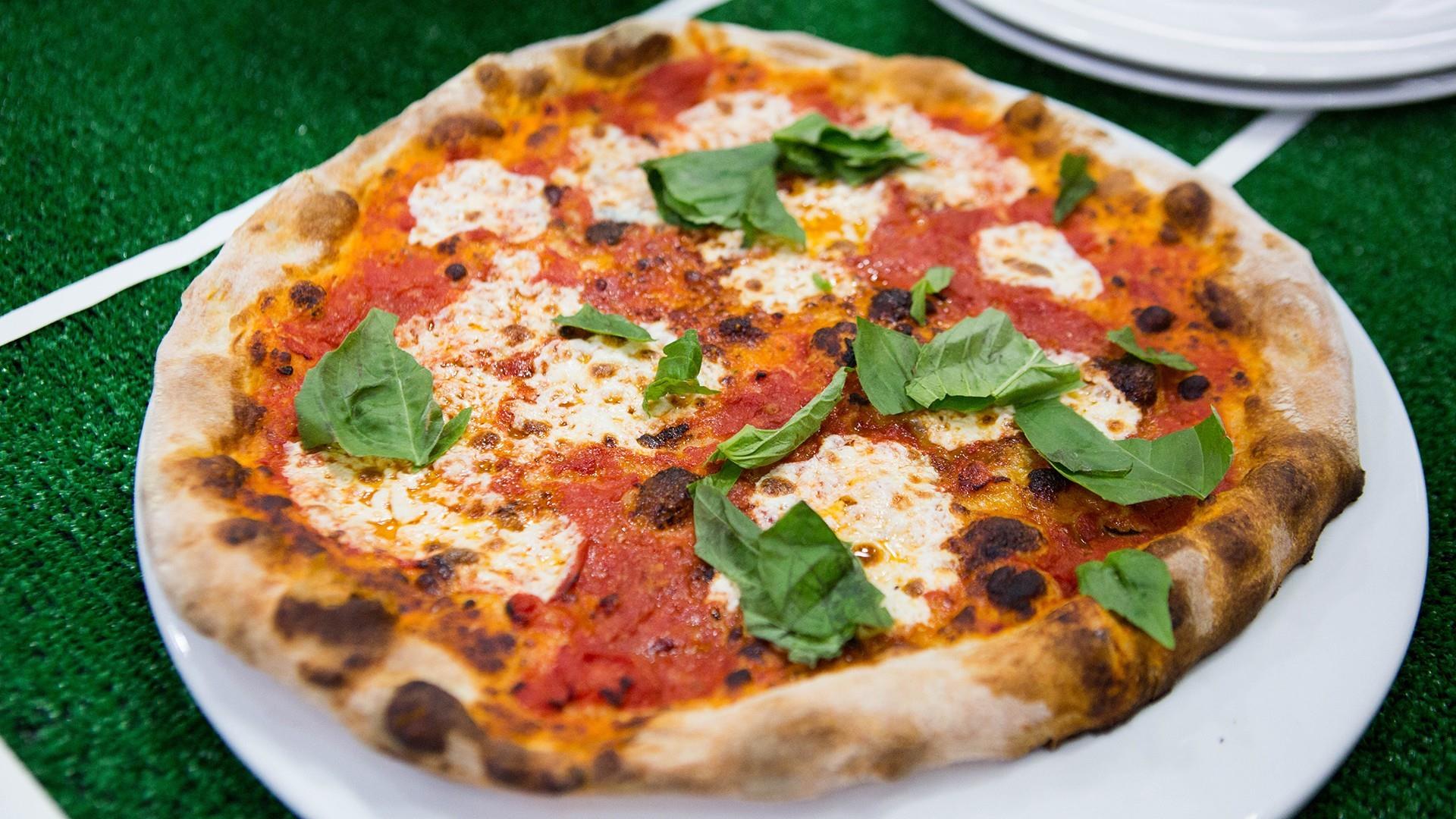When it comes to pizza, one of the most important things to consider is how many calories are in a whole pizza. After all, consuming too much can lead to weight gain and other health concerns. Fortunately, with some simple knowledge and understanding of the calorie content in pizzas, you can make sure that you don’t overindulge.
There are many factors that can influence the calorie content of a pizza. Topping choices, crust types, and sizes all affect how many calories you consume when eating a pizza. On average, one slice of cheese pizza from a standard-size pie contains about 246 calories. With this in mind, it’s easy to calculate how many calories are in anentire pizza.
What is Whole Pizza?

A whole pizza is usually considered to be a standard-size pie, which has eight slices. Generally speaking, this means that an entire pizza contains roughly 1972 calories. Of course, if you choose different toppings or opt for thick crust or larger pizzas, the calorie count can increase significantly. On the other hand, thin-crust pies with fewer toppings can result in fewer calories per slice and therefore a lower calorie count for the entire pizza.
Whether you’re ordering delivery or making your own pies at home, it is important to understand exactly what you are consuming. If you’re watching your weight, opt for thinner crusts with fewer toppings and consider sharing one pie instead of eating anentire one. With a bit of knowledge and mindful consumption, you can enjoy pizza without having to worry about calories.
Is Pizza Healthy?
Although pizza can be a part of a healthy diet, it is important to make sure that you are being mindful about the ingredients and toppings that you are consuming. Filled with vegetables and lean meats, pizza can provide essential nutrients for your body. However, if you opt for pizzas loaded with processed meats, excessive cheese, or unhealthy fats like greasy pepperoni,you can quickly find yourself consuming more calories than you need.
Pizza is a delicious treat that can be enjoyed in moderation. When choosing pizzas, opt for thin crusts with fewer toppings to ensure that you’re not consuming too many extra calories. Additionally, feel free to add your own healthy toppings such as vegetables and lean meats for an addednutritional boost. With these simple tips, you can enjoy pizza without worrying about the calorie count.
Types of Pizza Crusts
The type of crust used in making the pizza is another key factor when it comes to calorie content. Traditional pizzas are made with a thin crust, which tends to contain fewer calories than other types of crusts. On the other hand, deep dish pizzas have a thickercrust, which can add significantly more calories to the overall nutrition of the pizza.
Thin and regular crusts tend to contain between 200-300 calories per slice. Meanwhile, deep dish pizzas with a thick crust usually contain between 350-400 calories per slice. When calculating the calorie content in a whole pizza, it’s important to consider thetype of crust used.
How Many Calories in A Whole Small Pizza?
Small pizzas are typically made with a thin crust and contain about six slices. Depending on the toppings, these pizzas usually range from 600-900 calories in total. Toppings like pepperoni or sausage can add more calories to each slice, whereas healthier options such as vegetableswill keep the calorie count lower.
Choosing a small pizza can bea great way to enjoy pizza without overindulging. Consider adding your own healthy toppings, such as grilled chicken or mushrooms, for an added nutritional boost. Additionally, consider splitting the pie with a friend if you’re looking for a light snack. With some mindful consumption and moderation, small pizzas are a great option for those watching their calorie intake.
How Many Calories in A Whole Regular Pizza?
Regular pizzas are usually referred to as large or extra-large pies. These pizzas typically have eight slices and can range from 850-1500 calories in total. As with smaller pizzas, the calorie content of these pies depends on the type of crust used and what toppings you choose.
If you’re looking for a healthy way toenjoy a regular-sized pizza, consider opting for thin crusts and add your own healthy toppings. Lean meats such as grilled chicken or turkey can provide essential nutrients without adding too many extra calories. Additionally, adding vegetables like peppers, onions, or mushrooms can give the pizza an added nutritionalvalue.
How Many Calories in A Whole Large Pizza?
Large pizzas are typically made with thick crusts and contain 12 slices. These pies usually range from 1200-1800 calories in total, depending on the toppings used. If you’re looking to order a large pizza without overindulging, consider opting for a thinner crust and adding healthy toppings such as vegetables or lean meats.
How Many Calories in A Whole Extra Large Pizza?
Extra-large pizzas are usually made with thick crusts and contain 16 slices. Depending on the toppings, these pies can range from 1600-2400 calories in total. To reduce the calorie content of an extra-large pizza, consider opting for thin crusts and adding your ownnutritious toppings like vegetables and lean meats.

How to Determine the Calories in a Whole Pizza?
The caloric content in a whole pizza can vary greatly depending on the type of crust, toppings, and size. Generally speaking, one slice of cheese pizza from a standard-sized pie contains about 246 calories. By understanding the exact ingredients used in your pizza and calculating the amount of slices it contains, you can determine how many calories are in an entire pizza.
It’s also important to remember that pizza is often loaded with saturated and trans fats, so it should be consumed in moderation. If you’re looking for a way to enjoy pizza without going overboard on calories or fat intake, consider opting for thin crusts and adding your own nutritious toppings such as grilled chicken or vegetables. With mindful consumption and understanding of whatyou’re eating, pizza can be a delicious part of any healthy diet.
FAQs: How Many Calories In A Whole Pizza
How many kcal are in a whole pizza?
The exact amount of calories in a whole pizza depends on the ingredients that are used and the size of the pie. Generally speaking, small pizzas typically range from 600-900 calories whereas large or extra-large pies can range from 1200-2400 calories. To reduce the calorie content, consider opting for thin crusts and adding your own healthy toppings suchas vegetables and lean meats.
How many calories are in an average pizza?
On average, a slice of cheese pizza from a standard-sized pie contains about 246 calories. If you’re looking to estimate the calorie content for an entire pizza, consider calculating the number of slices it contains and then multiplying that by 246 to get an approximation.
How many calories in a whole 12 inch pizza?
A 12 inch pizza typically contains eight slices and can range from 850-1500 calories in total. The exact calorie content will depend on the type of crust used and what toppings you choose. Opting for thin crusts and adding your own healthy toppings such as vegetables or lean meats is a great way to reduce the calorie count. How many calories in awhole 16 inch pizza?
How many pieces of pizza is 1000 calories?
A 16 inch pizza contains 16 slices and usually ranges from 1600-2400 calories in total. To reduce the calorie content of an extra-large pizza, consider opting for thin crusts and adding your own nutritious toppings like vegetables or lean meats. 1000 calories is equivalent to 4-8 slices of pizza. The exact number of slices will depend on the typeof crust and toppings used. To reduce the calorie content, consider opting for thin crusts and adding your own healthy toppings such as vegetables or lean meats.
Does pizza have a lot of calories?
The amount of calories in any given pizza can vary depending on the size, crust type, and toppings used. Generally speaking, one slice from a standard-sized pie contains about 246 calories. However, pizzas with thick crusts and unhealthy toppings may contain significantly more calories per slice.
What is the healthiest type of pizza?
The healthiest type of pizza depends on personal dietary needs and preferences. Generally speaking, thin crusts with fewer toppings and healthy ingredients are considered to be a healthier option than pizzas with thick crusts or unhealthy toppings such as processed meats or greasy pepperoni. Additionallyfeel free to add your own healthy toppings such as vegetables and lean meats for an added nutritional boost.
Is it possible to eat pizza without consuming too many calories?
Yes, it’s definitely possible to enjoy pizza without overindulging on calories. Consider opting for thin crusts with fewer toppings and adding nutritious ingredients likegrilled chicken or vegetables. Additionally, feel free to split the pie with a friend if you’re looking for a light snack. With some mindful consumption and moderation, pizza can be a part of any healthy diet.
What are some healthier options when it comes to ordering pizza?
A. When ordering pizza, consider opting for thin crusts andadding your own healthy toppings such as grilled chicken or vegetables. Additionally, look for pies made with whole-grain crusts and lower calorie cheeses like Ricotta or feta. With the right toppings and ingredients, pizza can be a great way to enjoy a nutritious meal without sacrificing flavor!
How many calories should I aim for when ordering a wholepizza?
The amount of calories in a whole pizza will vary depending on the size, crust type, and toppings used. Generally speaking, small pizzas with thin crusts are usually between 600-900 calories in total; regular (large/extra-large) pizzas range from 850-1500 calories in total; and large/extra-large piesrange from 1200-2400 calories in total. With mindful consumption and understanding of what you’re eating, pizza can be a delicious part of any healthy diet.
Conclusion
Pizza is a delicious treat that can be enjoyed in moderation. Understanding the calorie content of different types and sizes of pizza is key to making sure you’re not overindulging. By opting for thin crusts with healthier toppings such as vegetables andlean meats, you can enjoy the delicious taste of pizza without having to worry about excessive calorie intake. Additionally, consider splitting a large or extra-large pizza with friends if you’re looking for a lighter snack. With mindful consumption and understanding of what your body needs, pizza can be a delicious part of any healthy diet.
References
https://www.eatthis.com/best-worst-pizza-toppings/

James Burney is the founder of Acadia House Provisions is a restaurant that with local & upscale dishes and high-quality kitchen supplies and food products. James was born and raised in Maine, and he has always been passionate about cooking. After working in a number of prestigious restaurants he started Acadiahouseprovisions.com with the goal develop into a comprehensive information site specializing in cooking and cuisine. His goal is to make it easy for people to cook delicious meals at home without spending a fortune.
